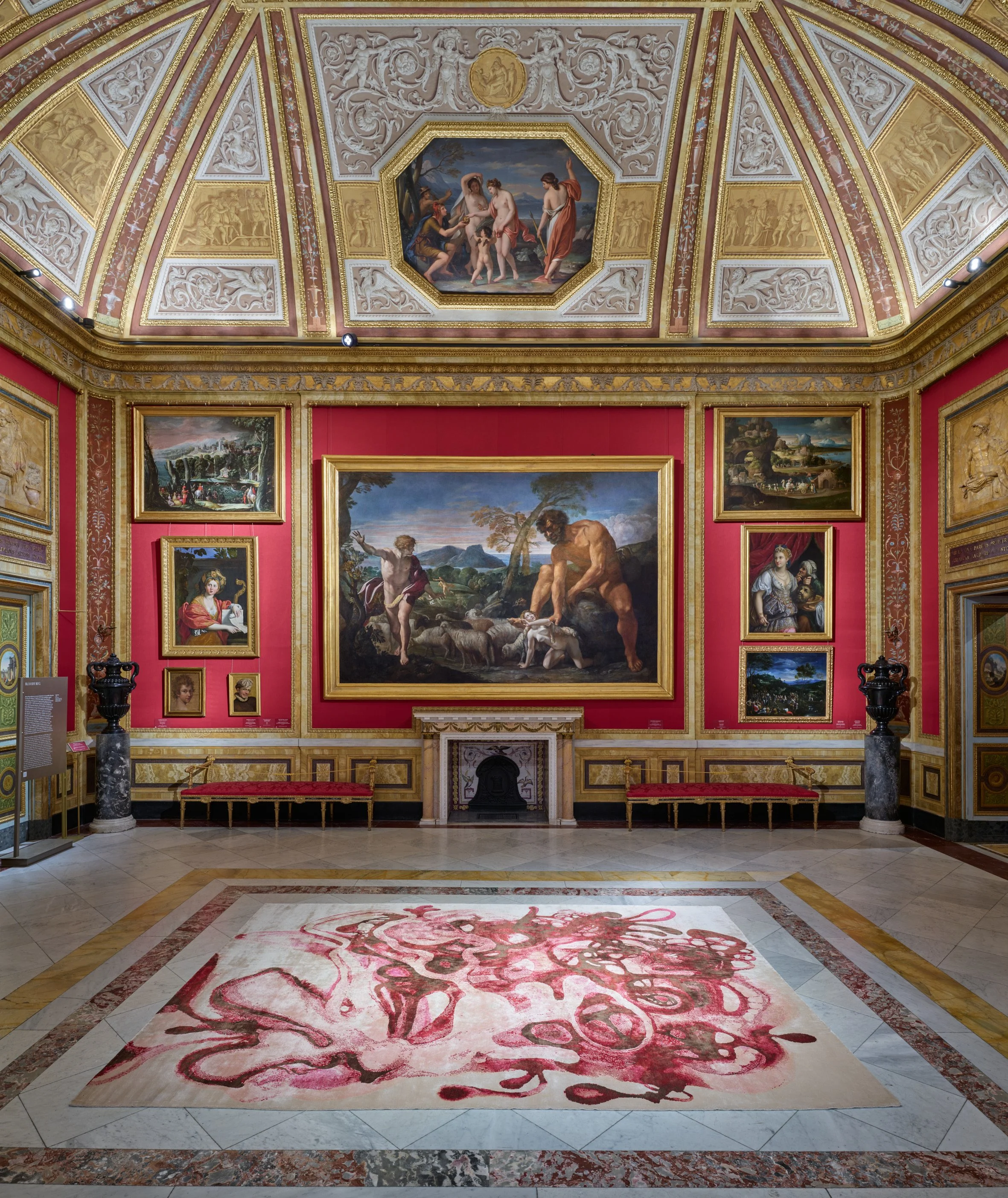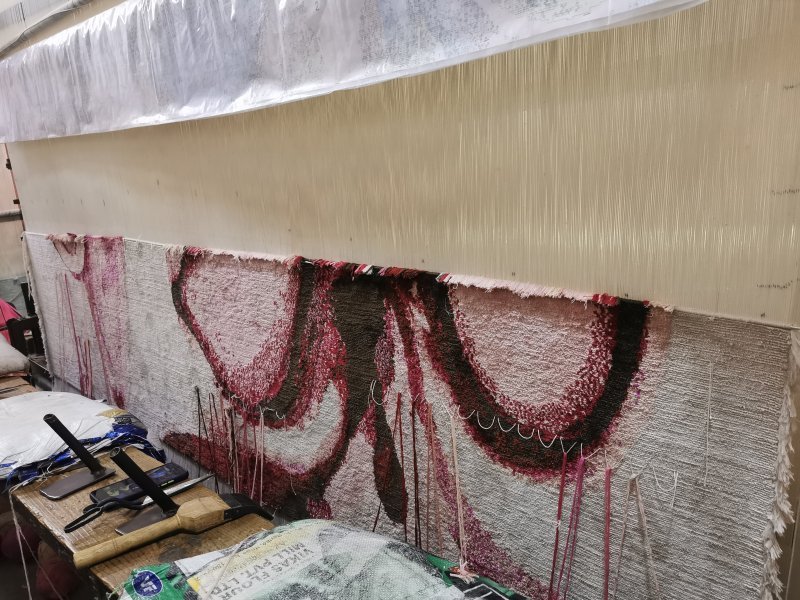WANGECHI MUTU
Bloody Rug
Wangechi Mutu's work deals with the very idea of human representation; how we perceive and reproduce images of what we think we are, how we view others and create images of what we think of them. In her ongoing conversations with figuration, what Mutu’s work looks at are value systems in Art and beyond, that either obscure or elevate our image and reflections. In her collage-paintings, sculptures, films and performance rituals, Mutu uses ink, soil, ash, bronze, driftwood, horn, pigments, wine, hair; ultimately keeping the figure as the focus, always seeking to find out more about who we are, what we mean to each other and why we continue to recreate ourselves for millennia through Art.
Mutu has participated in several major solo exhibitions in institutions worldwide, currently “Wangechi Mutu” at Storm King Art Center and most recently at The Metropolitan Museum of Art “The Façade Commission: Wangechi Mutu, The New Ones, Will Free Us” and at The Fine Arts Museums of San Francisco Legion of Honor Museum “Wangechi Mutu: I Am Speaking, Are You listening?”. Wangechi Mutu is represented by Barbara Gladstone Gallery.
The Wangechi Mutu measures 106 x 144 inches and is woven with 11 colors of 15-ply silk. The knot-count is 150 knots per inch, (34 million strands of silk and 2.2 million knots).
An excerpt from Elisa Carollo’s article: Observer, Elisa Carollo, “First Look: Wangechi Mutu’s ‘Black Soil Poems’ at Galleria Borghese” June 10, 2025 here:
"Continuing this exercise in the exteriorization of visceral sensations, Bloody Rug becomes a silent physical record of violence—an interiorized trauma passed down through generations. The stains of past wounds are not easily reconciled, remaining embedded in the very fabric of identity, both individual and communal. Installed in the same room as Domenichino’s The Hunting of Diana, this work establishes a counter-narrative, confronting the tradition of gendered spectacle. While in the painting, the women are watched by hidden men as an allegory of intrusion, the deep red carpet is marked and stained, refusing to conceal the trauma of gender and racial violence, instead absorbing and exposing its traces. Contained within the rectangular space of this domestic textile, it attempts a silent record of violence—one that already extends beyond the confines of the piece itself."
Wangechi Mutu’s rug edition at the Villa Borghese, Rome. Photo: Francesco Cascino
on the loom


